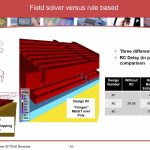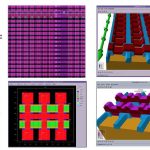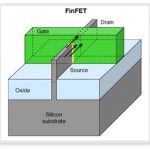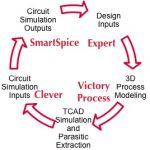It was 1988 when I got into SPICE (Simulation Program with Integrated Circuit Emphasis)while I was characterizing a 1.5 μm Standard cell library developed by students at my Alma-Mata Furtwangen University in Germany. My professor Dr. Nielinger was not only my advisor he also wrote the first SPICE bible in German language. At that… Read More
Author: admin
SPICE Model Generation by Machine Learning
Sometimes a Solver is a Suitable Solution
Traditional, rule based, RC extractors rely on a substantial base of assumptions, which are increasingly proving unreliable. Having accurate RC extraction results for parasitic R’s and C’s is extremely important for ensuring proper circuit operation and for optimizing performance and power. Advanced process nodes are making… Read More
Free Webinar: Silvaco 3D Solver Based Extraction for Device and Circuit Designers
Designers spend a lot of time looking at their layouts in 2D. This is done naturally because viewing in 2D is faster and simpler than in 3D. It helps that humans are good at extrapolating from 2D to 3D. Analysis software, such as extraction software also spend a lot of time looking at layouts in 2D. While this is fine for approximate results,… Read More
Free Webinar on Standard Cell Statistical Characterization
Variation analysis continues to be increasingly important as process technology moves to more advanced nodes. It comes as no surprise that tool development in this area has been vigorous and aggressive. New higher reliability IC applications, larger memory sizes and much higher production volumes require sophisticated yield… Read More
SPI Inspires a New Generation of SOC Designs
When I started dabbling in hardware again for fun using Arduinos about five years ago, it had been a long time since I had played with microprocessor chips. The epiphany for me was seeing how easy it was to load programs onto the onboard flash on something like an Atmel AVR using the SPI interface. My previous experience decades early… Read More
Calling on #IoTman to save humanity!
We, in the hi-tech community, tend to gravitate towards the technology, the API, the device, the platform, the processes node and to forget the goal behind all of those items. We have all noticed the platform wars and cloud API struggle for #IoT market domination. Someone needs to bring back the discussion to the top level, to why … Read More
It’s Time to Put Your Spice Netlists on a Diet
Spice circuit simulation remains the backbone of IC design validation. Digital cell library developers rely upon Spice for circuit characterization, to provide the data for Liberty models. Memory IP designers utilize additional Spice features to perform statistical sampling. Analog and I/O interface designers extend these… Read More
The Importance of Transistor-Level Verification
According to the IEEE Std 1012-2012, verification is the acknowledgement that a product is in satisfactory condition by meeting a set of rigorous criteria. [3] Transistor-level verification involves the use of custom libraries and design models to achieve ultimate performance, low power, or layout density. [2] Prediction… Read More
SEMATECH, Silvaco and SRAM
SEMATECH has been around for over 20 years, starting in Austin. Today it is in upstate New York which increasingly seems to be the area for semiconductor research with IBM (still doing research although they sold their semiconductor business to GlobalFoundries), GlobalFoundries’ own Fab 8, the College of Nanoscale Science… Read More
Silvaco 30 Years Ago
It’s Silvaco’s 30 year anniversary. You may already know the dry official story of the early days:
- Founded in 1984 by Dr Ivan Pesic
- In 1984 the initial product, Utmost, quickly became the industry standard for parameter extraction, device characterization and modeling.
- In 1985 Silvaco entered the SPICE circuit

















Jensen Huang Drops Donald Trump Truth Bomb on Joe Rogan Podcast